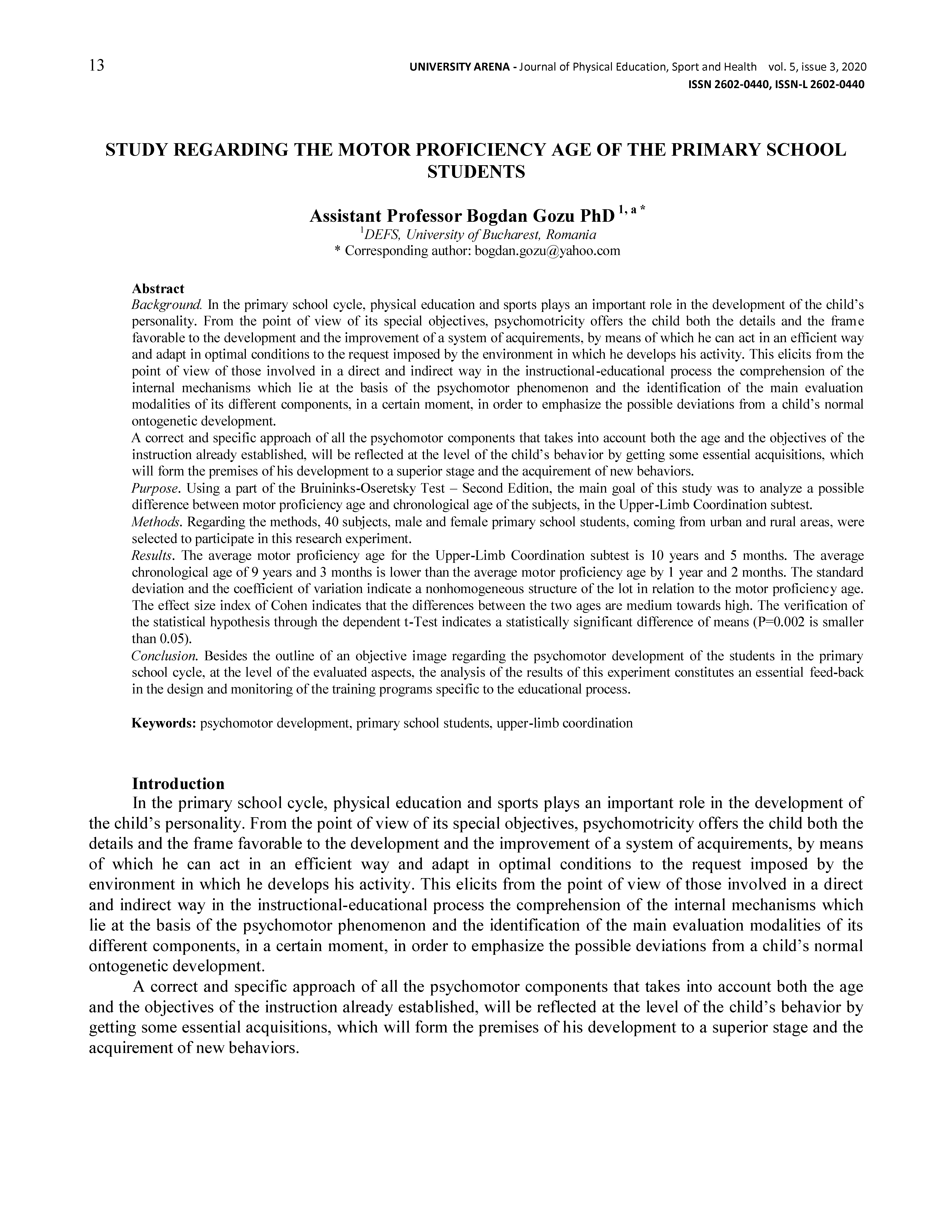STUDY REGARDING THE MOTOR PROFICIENCY AGE OF THE PRIMARY SCHOOL STUDENTS
DOI:
https://doi.org/10.62229/UaV_3_20-2Keywords:
psychomotor development, primary school students, upper-limb coordinationAbstract
Background. In the primary school cycle, physical education and sports plays an important role in the development of the child’s personality. From the point of view of its special objectives, psychomotricity offers the child both the details and the frame favorable to the development and the improvement of a system of acquirements, by means of which he can act in an efficient way and adapt in optimal conditions to the request imposed by the environment in which he develops his activity. This elicits from the point of view of those involved in a direct and indirect way in the instructional-educational process the comprehension of the internal mechanisms which lie at the basis of the psychomotor phenomenon and the identification of the main evaluation modalities of its different components, in a certain moment, in order to emphasize the possible deviations from a child’s normal ontogenetic development.
A correct and specific approach of all the psychomotor components that takes into account both the age and the objectives of the instruction already established, will be reflected at the level of the child’s behavior by getting some essential acquisitions, which will form the premises of his development to a superior stage and the acquirement of new behaviors.
Purpose. Using a part of the Bruininks-Oseretsky Test – Second Edition, the main goal of this study was to analyze a possible difference between motor proficiency age and chronological age of the subjects, in the Upper-Limb Coordination subtest.
Methods. Regarding the methods, 40 subjects, male and female primary school students, coming from urban and rural areas, were selected to participate in this research experiment.
Results. The average motor proficiency age for the Upper-Limb Coordination subtest is 10 years and 5 months. The average chronological age of 9 years and 3 months is lower than the average motor proficiency age by 1 year and 2 months. The standard deviation and the coefficient of variation indicate a nonhomogeneous structure of the lot in relation to the motor proficiency age. The effect size index of Cohen indicates that the differences between the two ages are medium towards high. The verification of the statistical hypothesis through the dependent t-Test indicates a statistically significant difference of means (P=0.002 is smaller than 0.05).
Conclusion. Besides the outline of an objective image regarding the psychomotor development of the students in the primary school cycle, at the level of the evaluated aspects, the analysis of the results of this experiment constitutes an essential feed-back in the design and monitoring of the training programs specific to the educational process.


